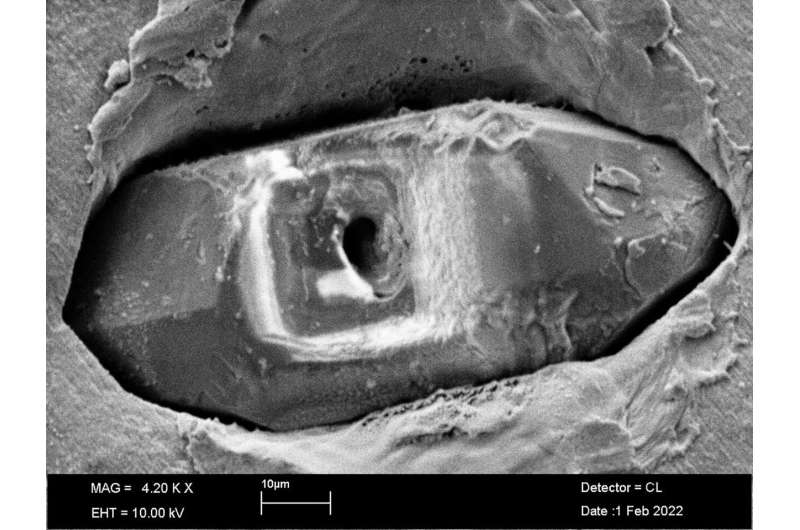This article has been reviewed according to Science X's editorial process and policies. Editors have highlighted the following attributes while ensuring the content's credibility:
fact-checked
peer-reviewed publication
trusted source
proofread
Ancient magma reveals signs of life in zircons from ancient Earth

Zircon crystals, like a time capsule, can preserve traces of life hundreds of millions of years old in the form of biogenic carbon. Using new methods, geoscientists at Heidelberg University have succeeded in tracing very old and rare examples of the mineral zircon that host graphite inclusions in which light carbon is identifiable as a remnant of earlier life.
According to the researchers, this opens up new possibilities for research into our planet's early period for which neither fossils nor sediments have been preserved in their original form.
Zircon mineral grains form from magma, i.e., melted rock, in an extremely hot and intrinsically hostile environment. Yet heated remnants of organisms were converted to carbon dioxide and methane gases and deposited as graphite in the mineral zircon at approximately 700°C.
"The special isotopic signature of biogenic carbon remains largely preserved in most inclusions and leaves behind a kind of fingerprint of earlier life forms," explains the study's lead author Dr. Manfred Vogt at the Institute of Earth Sciences at Heidelberg University.
Taking the measurements is extremely demanding, emphasize the researchers. First, intact graphite inclusions, some measuring just a few micrometers and thus a hundred times finer than a human hair, must be found and identified within zircon crystals. To exclude contamination with carbon from the environment, non-destructive Raman microspectroscopy is used to examine the encapsulated inclusions in place in the zircons. Next, the zircons are bombarded with an ion beam to expose the graphite inclusions so that their carbon isotopic composition can be analyzed.
"In this process, we can remove only a few nanometers of thick carbon layers and measure them individually, thus obtaining many data points for a single inclusion to detect possible variations," explains Dr. Winfried Schwarz, a participant in the study. The results of the research were published in Geochimica et Cosmochimica Acta.
Zircons are among the oldest minerals on Earth, some older than four billion years. "They can teach us about well over 96% of the Earth's history. For the first hundred million years, these crystals represent the only known record holding information on very early conditions on the planet. Inclusions in these oldest zircons have already revealed that water and oceans existed on Earth early on, as well as movements of the continental plates," explains Dr. Vogt.
More information: Manfred Vogt et al, Graphitic inclusions in zircon from early Phanerozoic S-type granite: Implications for the preservation of Hadean biosignatures, Geochimica et Cosmochimica Acta (2023). DOI: 10.1016/j.gca.2023.03.022
Journal information: Geochimica et Cosmochimica Acta
Provided by Heidelberg University




















